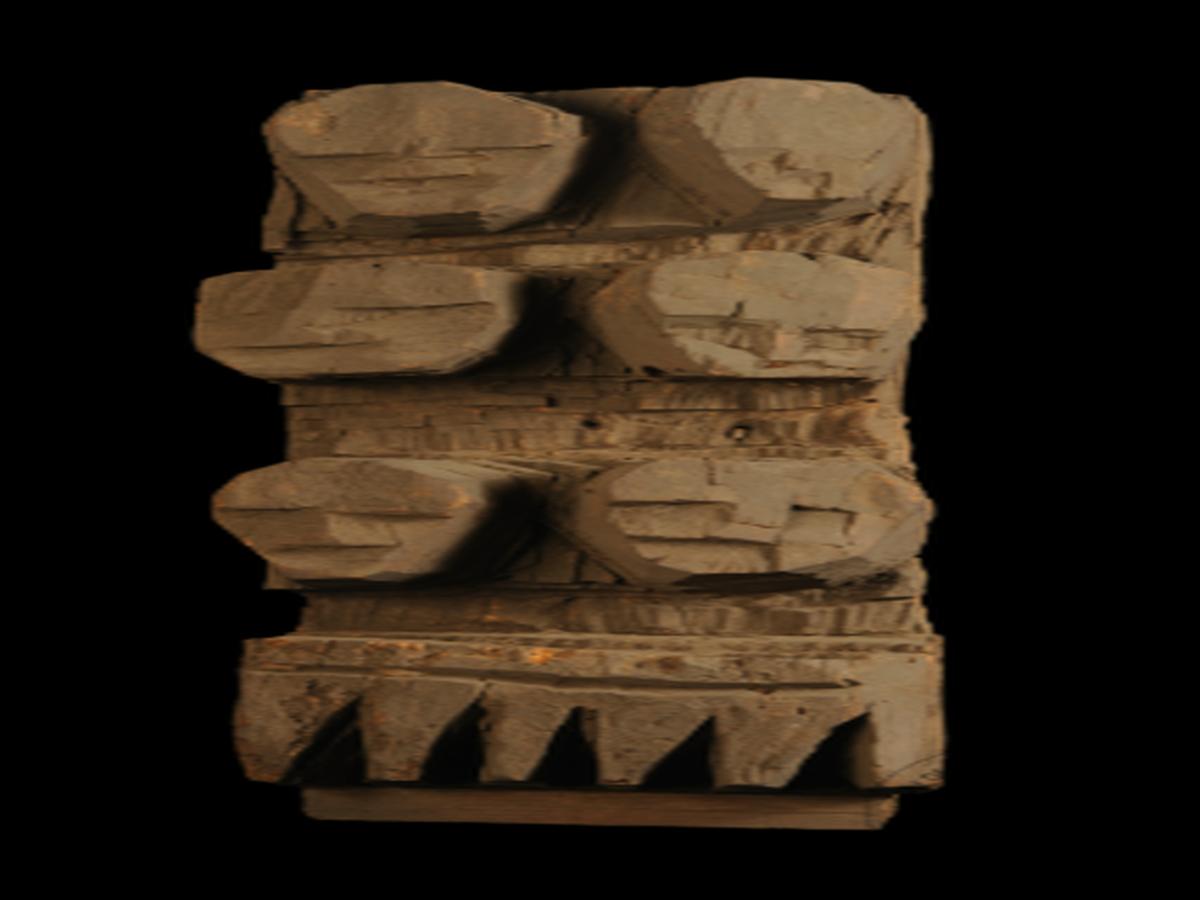State
Tribe Name
Art Type
short description
It's a carved wooden board constructed by the Tangkhul Naga tribe bearing witness to the martial arts traditions and symbolic art of one of Northeast India’s most culture-rich indigenous communities. It is an enormous, roughly chiseled piece of wood, comprising six human heads arranged in three rows, two heads in each row. A set of five teeth is also carved meticulously beneath them; each element is invested more profoundly in cultural and historical significance. In earlier traditional societies, headhunting was a rite of passage in Tangkhul Naga, pride, and community protection from spiritual harm. The heads carved are believed to represent captured or slain enemies and exist in one stage to be lauded as the warriors' gallantry and, in another, as a spiritual safeguard for the village. The five carved teeth below the rows of heads could symbolize power, protection, or the warrior's ferocity, again stressing the message of bravado and supremacy in the narrative of the board.
Thumbnail

Filter Postion
Left
Filter Background
Off
Theme
Filter Header Image

content
Image

description
It's a carved wooden board constructed by the Tangkhul Naga tribe bearing witness to the martial arts traditions and symbolic art of one of Northeast India’s most culture-rich indigenous communities. It is an enormous, roughly chiseled piece of wood, comprising six human heads arranged in three rows, two heads in each row. A set of five teeth is also carved meticulously beneath them; each element is invested more profoundly in cultural and historical significance. In earlier traditional societies, headhunting was a rite of passage in Tangkhul Naga, pride, and community protection from spiritual harm. The heads carved are believed to represent captured or slain enemies and exist in one stage to be lauded as the warriors' gallantry and, in another, as a spiritual safeguard for the village. The five carved teeth below the rows of heads could symbolize power, protection, or the warrior's ferocity, again stressing the message of bravado and supremacy in the narrative of the board.
Though headhunting has long been-abandoned, such carvings survive as historical and spiritual archetypes often placed in morungs (youth dorms) or chief’s houses as memories from tribal heroic pasts. Such boards play a major role in oral histories; they tell the warrior ethos of the Tangkhul people. This unique blend of symbolism, artistry, and a culture memory qualifies the carved wooden board as more than an artifact but as a testament to the legacy of the Tangkhul Naga tribe.
Though headhunting has long been-abandoned, such carvings survive as historical and spiritual archetypes often placed in morungs (youth dorms) or chief’s houses as memories from tribal heroic pasts. Such boards play a major role in oral histories; they tell the warrior ethos of the Tangkhul people. This unique blend of symbolism, artistry, and a culture memory qualifies the carved wooden board as more than an artifact but as a testament to the legacy of the Tangkhul Naga tribe.
Image Mode
landscape
promoted
On
Verified
Off
